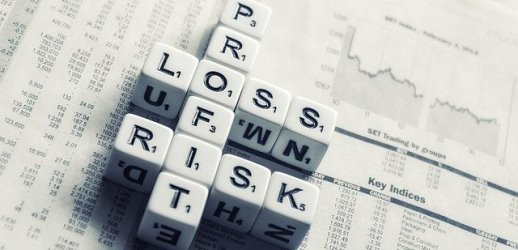Investment Hacks To Bring Out Your Pro Investor!
If the stock market makes you nervous, I recommend several timeless investment hacks to calm your nerves and make money.

Disclosure: At no cost to you, I may get commissions for purchases made through links in this post.
Can You Make Money With Stocks
The stock market goes up and down. So, making money in stock investing seems tough.
But let’s think of everything the stock market has been through. For example, I clearly remember:
- The valuation-induced stock market crash of 1987
- A bursting of the internet bubble in 2000-2001
- Terrorist attacks in 2011 and years of war against terror
- The collapse of World Com and Enron in 2006 and 2007 because of corporate fraud
- The financial crisis and the Great Recession of 2008 to 2009
- Pandemic induced losses
- Inflation and rising interest rates
I made it through all of these crises. And, as long as I can maintain good health, I will make it through the next one.
Foolproof Stock Investment Hacks?
But you might say investing in stocks is a fool’s game. But is it? My answer is no.
Why? Let me explain.
What do all of the situations I just mentioned have in common?
- A surprise event few people saw coming
- An economic recession
- Uncertainty about a solution to the problem at hand
- Fear and panic
- Massive stock market losses
- Large value decreases in assets of all kinds
What am I going to do? Well, I’m turning to the best investment hacks I know.
These foolproof stock investing tips work. At least they have worked for me during the last 40 years. So, I want to review my favorite investment hacks with you today.
The Epic List Of Investing Tips For Foolproof Stock Investing
Here are my 17 favorite investment hacks for foolproof stock investing in good times or bad. These are the best investing tips that I’m focusing on right now.
But first, save the image below to Pinterest so you can return here later.

1. Know Your Budget To Maximize Your Investment Dollars
Having a budget is very important. Not having a budget is poor financial management.
Budgeting doesn’t have to be complicated. A pencil and paper will suffice. A spreadsheet or free online software is okay, too.
When preparing your budget, expenses should be no more than income. Look for ways to create excess cash. This is where income exceeds expenses. Use the excess cash from your budget for investments.
Investment hack #1 is to prepare a monthly budget. Identify any extra dollars available to make investments.
2. Start Investing Or Continue Investing In Stocks

Building wealth by investing takes time. The earlier in life you start, the better your chances for success.
If you haven’t started investing yet, start now. It will never be earlier than today. And stocks have gone on sale.
My best investments were made during times of economic and financial distress. It’s not easy during these times. I understand that. But, I’m continuing to invest.
To make money in the stock market, you MUST follow investment hack #2 and start investing. Or, if you have already started, continue investing.
3. Invest In Small Amounts
I know it is tough to invest money in stocks when they are going down. One way to manage this fear is to invest in small dollar amounts.
Do not make large investments. Save some cash for the next day, the next week, or next month.
The stock market may continue to go down. So, you can take advantage of lower prices in the future.
Investing the same amount regularly is also known as dollar-cost averaging. It reduces the risk of putting all your money into an investment at its peak price.
For foolproof stock investing during good times or bad, remember investment hack #3. Invest in small amounts. This is exactly what I have been doing over the past few weeks.
4. Foolproof Your Investments By Thinking Long Term

Stock markets and asset prices go through up and down cycles. But in the long run, you stand the best chance of earning positive returns.
I always try to make smart investments and hold them forever. It’s one of many simple but effective defensive investing tactics we will discuss today.
Don’t commit money to stock investing if you need that money in the next 3-5 years. You do not want to be forced to sell at a point when the stock market is down. Like, right now.
Investment hack #4 is to think long-term. At the very least, do not commit money to stock investing that you will need in 3-5 years.
5. Don’t Try & Time The Stock Market
NO ONE knows when stocks will hit bottom. So, don’t try and time your purchases to hit the bottom.
Start or continue investing. Invest in small amounts. If you do this, some of your investments will be made at or near the lowest prices.
Investment hack #5 suggests not practicing foolish stock investing and trying to time the market.
6. Establish Your Investment Objectives
Choose an investment strategy by establishing your investment objectives. Here are some good questions to ask:
- Do you want capital appreciation, income from investments, or total returns?
- What is the money going to be used for?
- Are you investing for retirement many years away?
- Are you saving to make a down payment on a house in a few years?
Your investment objectives will help you determine how much risk you can take. And determine what types of investments are most appropriate.
So, before you invest a penny, investment hack #6 requires a very clear set of investment objectives.
7. Know Your Risk Tolerance

When you invest money in assets like the stock market, there is a risk of losing money. The last few weeks have clearly shown us this.
How will you react when you lose money? If you have already started investing, you have experienced losing money in stocks. Just like me. This experience is painful but valuable.
If you want to sell at the first sign of a loss, you are risk-averse. Therefore, your investments should be very conservative. Think savings accounts, certificates of deposit, or short-term and intermediate-term bonds. Of course, less risk means less reward.
On the other hand, can you think long-term? Will you hold your investments as the stock market declines? Can you handle decreases in your investment portfolio?
Did you answer yes to these questions? Then, you should be able to tolerate more risk.
These are tough questions. Sometimes, you only know your reaction when the stock market crashes.
Be honest with yourself. You and only you can address investment hack #7. That is, know your risk tolerance.
8. Understand What You Are Investing In
What should you invest in? Individual stocks, exchange-traded funds, mutual funds, etc. These are all reasonable options for foolproof stock investing.
Ensure you understand what you are buying and why you are buying it. Research your investments. Don’t make crazy investments. That you do not understand.
I use the Simply Investing report to understand the dividend stocks I invest in. Click to read my review about the Simply Investing Report.
9. Establish An Asset Allocation

Determining your assets allocated to stocks is a key investing hack required for foolproof stock investing.
Asset allocation is the mix of assets you hold. Cash, low-risk bonds, and stocks are financial assets.
Commodities and real estate represent other major asset classes. They are considered physical assets, also known as real assets.
Asset allocation is one of the primary drivers of investment returns. Your asset allocation should be consistent with your risk tolerance.
We are discussing stock market investing here. So, your asset allocation to stocks will be the percentage of your net worth allocated to stock market investments.
Here is an easy investment hack to determine your asset allocation for stocks:
Take 100 and subtract your age. For example, if you are 40 years old, 100 minus 40 is 60. Therefore, 60% of your net worth should be allocated to equities.
10. Rebalance Investments At Least Annually
Once or twice per year, check to see if your asset allocation to the stock market is at the target you just determined. Then, rebalance to get back on target. Rebalancing is an important part of many investment strategies.
Buy or sell to get back to the target allocation to stocks. This investment hack will force you to buy low and sell high.
Investment hack #10 requires you to rebalance your target asset allocation once or twice yearly.
Of all the investment hacks, this is my favorite:
11. Invest For Dividend Income

Think about investing for income. Focus your investments on dividend stocks and dividends. Dividends provide comfort during difficult economic times.
Why? The stock market was recently down by more than 30% from its high. I have suffered losses right along with you. But my dividend income has gone up!
Higher dividend income is due to making new investments in small amounts. Buying more shares of dividend stocks increases my dividend income. Also, some companies have increased their dividends.
While the world panics, my income is increasing, and I find great comfort in this.
So, investment hack #11 tells us to focus on growing a stream of investment income from dividends.
And my 2nd favorite investment hack is next.
12. Reinvest All Dividends
If you do not need to spend your dividends, investment hack #12 says reinvest them.
Dividend reinvestment plans are one method. In this case, the dividend is automatically reinvested into the security that paid it.
Another method is to let the dividends accumulate in cash. Then, reinvest the cash lump sum. You choose what investment and when to make it.
Reinvesting dividends is a great way to invest in small amounts. Hey, that was investment hack #3.
13. Minimize Investment Costs
Focus your investments on low-cost funds or individual securities. Furthermore, keep trading to a minimum to avoid transaction fees.
Better yet, make all your stock trades for free. Zero-cost, zero-commission stockbrokers are easy to find.
14. Minimize Taxes By Tax Loss Harvesting
The only reason I would suggest selling during a bear market is to harvest tax losses. Why? Realized investment losses have value.
First of all, realized losses shield capital gains from being taxed. If capital losses exceed gains during the tax year, up to $3,000 can be used to offset taxes on ordinary income. Finally, excess capital losses can be used in future tax years.
There is a catch. You must abide by the IRS wash sale tax rules.
Wash sales occur when an investor sells stock at a loss. Then, buy the same investment back within 30 days before or after the original sale. If you want the loss for tax purposes, don’t do this.
Pro Investing Tip – Don’t forget to put the proceeds from the sale into a different investment of your choice. Stay invested!
15. Invest In Qualified Retirement Accounts

Most employers sponsor qualified retirement accounts. They are also known as 401(k) or 403(b) plans for US investors. Investing in qualified retirement accounts is one of the best investment hacks. Why?
First, your money can be invested before any taxes are taken out.
Furthermore, your money grows without being taxed until you take retirement withdrawals.
Finally, most companies will contribute to your retirement account. It is called a company match.
So, ensure you participate at the minimum level to maximize your company’s match. This is part of your compensation package. Don’t waste it.
16. Foolproof Investing With Automation
Make automatic investments either from your paycheck to your company-sponsored retirement plan. Or automate your investments from your checking account to your investment account.
Automating monthly investments is a great way to invest in small amounts. And take advantage of dollar-cost averaging. That’s investment hack #3 AGAIN. It keeps coming up.
17. Monitor Your Investments Regularly
Periodically monitor and review your holdings and investment process against each of these investment hacks.
Learn from your mistakes. Make adjustments as your circumstances change.
But do not check your account balances too often. Investment hack #11 reminds us to focus on income investing for dividends. It will be much more stable than the balances in your investment accounts.
Summary: 17 Investment Hacks For Foolproof Stock Investing
- Know your budget & identify cash for investment
- Start investing or continue investing in stocks
- Invest In Small Amounts
- Think long term
- Don’t try to time the stock market
- Know your investment objectives
- Understand your risk tolerance
- Know what you are investing in
- Establish an asset allocation
- Rebalance investments once or twice each year
- Invest for dividend income
- Reinvest all dividends
- Minimize investment costs
- Minimize taxes
- Invest in qualified retirement accounts
- Automate your investments
- Monitor your investments
Related Articles Full Of Other Useful Investment Hacks
Author Bio: Tom Scott founded the consulting and coaching firm Dividends Diversify, LLC. He leverages his expertise and decades of experience in goal setting, relocation assistance, and investing for long-term wealth to help clients reach their full potential.
Hi Tom,
Great tips. Like you, I’ve responded to this crisis by continuing my buys, but gradually. Also, I’ve done tax-loss harvesting. I think sticking to a plan is crucial right now; it’s pretty much impossible to make sense of what the market is doing right now, especially when it rises so much amidst the bad news.
Take care,
Miguel
Hi Miguel. You are right. It is a must to stay grounded in solid investing tips right now. Whether you want to call them investment hacks, investment principles, or whatever; we all need to take the emotion out of our investing even during such an emotional time. Tom
Fantastic tips. I’ve also been dollar cost averaging and investing in small amounts. I try not to invest more than once week. I haven’t bought anything for the past two weeks but put an order in for tomorrow for MFC.TO (Manulife Financial) at a 6% yield +.
Also I like to put limit orders in and that controls the temptation and emotions.
Hi GYM. I haven’t bought since the market rallied off the bottom. I’m not a market timer, but I feel like the market is going to revisit those lows. I will accumulate some cash in the meantime and start to purchase in small amounts on the next dip if/when it comes. Tom